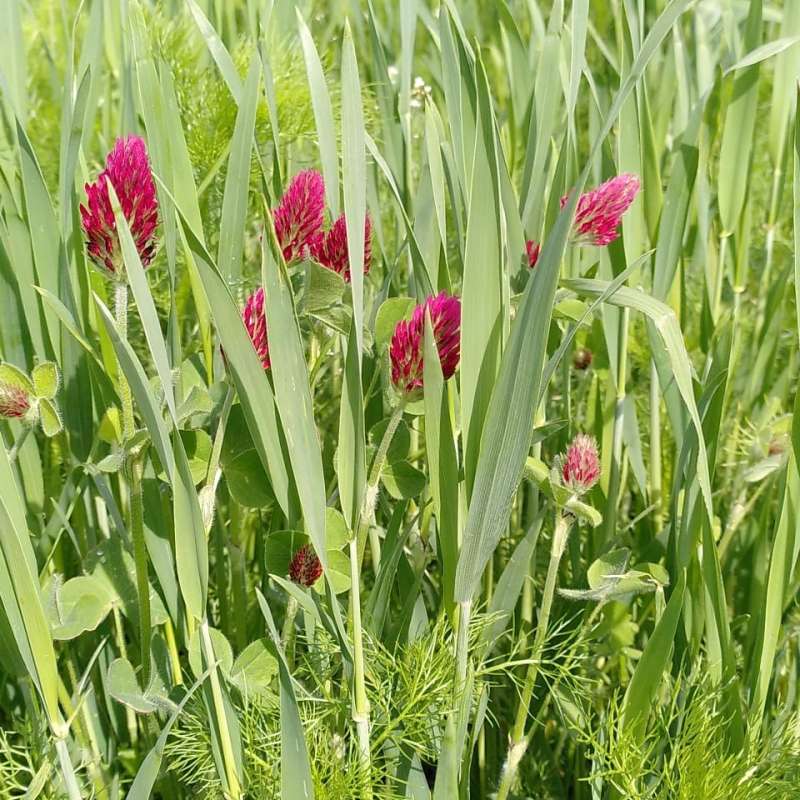Ingerd Skow Hofgaard
Research Scientist
Biography
Authors
Anne-Grete Roer Hjelkrem Heidi Udnes Aamot Guro Brodal Einar Strand Torfinn Torp Simon G. Edwards Ruth Dill-Macky Ingerd Skow HofgaardAbstract
No abstract has been registered
Authors
Anne-Grete Roer Hjelkrem Torfinn Torp Guro Brodal Heidi Udnes Aamot Einar Strand Berit Nordskog Ruth Dill-Macky Simon G. Edwards Ingerd Skow HofgaardAbstract
No abstract has been registered
Authors
Matias Pasquali Marco Beyer Antonio Logrieco Kris Audenaert Virgilio Balmas Ryan Basler Anne-Laure Boutigny Jana Chrpova Elzbieta Czembor Tatiana Gagkaeva María T. González-Jaén Ingerd Skow Hofgaard Nagehan D. Köycü Lucien Hoffmann Jelena Lević Patricia Marin Thomas Miedaner Quirico Migheli Antonio Moretti Marina E. H. Müller Françoise Munaut Päivi Parikka Marine Pallez-Barthel Jonathan Piec Jonathan Scauflaire Barbara Scherm Slavica Stanković Ulf Thrane Silvio Uhlig Adriaan Vanheule Tapani Yli-Mattila Susanne VogelgsangAbstract
No abstract has been registered
Authors
Ingerd Skow Hofgaard Heidi Udnes Aamot Torfinn Torp M. Jestoi V.M.T. Lattanzio Sonja Klemsdal C. Waalwijk T. van der Lee Guro BrodalAbstract
During the last ten years, Norwegian cereal grain industry has experienced large challenges due to Fusarium spp. and Fusarium mycotoxin contamination of small-grained cereals. To prevent severely contaminated grain lots from entering the grain supply chain, it is important to establish surveys for the most prevalent Fusarium spp. and mycotoxins. The objective of our study was to quantify and calculate the associations between Fusarium spp. and mycotoxins prevalent in oats and spring wheat. In a 6-year period from 2004-2009, 178 grain samples of spring wheat and 289 samples of oats were collected from farmers’ fields in South East Norway. The grains were analysed for 18 different Fusarium-mycotoxins by liquid chromatography – mass spectrometry. Generally, the median mycotoxin levels were higher than reported in Norwegian studies covering previous years. The DNA content of Fusarium graminearum, Fusarium culmorum, Fusarium langsethiae, Fusarium poae and Fusarium avenaceum were determined by quantitative PCR. We identified F. graminearum as the main deoxynivalenol (DON) producer in oats and spring wheat, and F. langsethiae as the main HT-2 and T-2-toxins producer in oats. No association was observed between quantity of F. graminearum DNA and quantity of F. langsethiae DNA nor for their respective mycotoxins, in oats. F. avenaceum was one of the most prevalent Fusarium species in both oats and spring wheat. The following ranking of Fusarium species was made based on the DNA concentrations of the Fusarium spp. analysed in this survey (from high to low): F. graminearum = F. langsethiae = F. avenaceum > F. poae > F. culmorum (oats); F. graminearum = F. avenaceum > F. culmorum > F. poae = F. langsethiae (spring wheat). Our results are in agreement with recently published data indicating a shift in the relative prevalence of Fusarium species towards more F. graminearum versus F. culmorum in Norwegian oats and spring wheat.
Authors
Ingerd Skow Hofgaard Till Seehusen Heidi Udnes Aamot Hugh Riley Jafar Razzaghian Vinh Hong Le Anne-Grete Roer Hjelkrem Ruth Dill-Macky Guro BrodalAbstract
No abstract has been registered
Abstract
No abstract has been registered
Abstract
No abstract has been registered
Authors
Ingerd Skow Hofgaard Guro Brodal Heidi Udnes Aamot Marit Almvik Aina Lundon Russenes Morten Lillemo Simon Graham EdwardsAbstract
Oat harvested from plants infested with plant pathogenic fungi within the Fusarium head blight (FHB) complex may sometimes contain high levels of mycotoxins, which makes the grain unsuitable for food and feed. Fusarium graminearum, a deoxynivalenol (DON) producer, and Fusarium langsethiae, a T-2 toxin (T2) and HT-2 toxin (HT2) producer, are commonly occurring in Norwegian oats. We have analysed grains of Nordic oat varieties and breeding lines for the content of mycotoxins and DNA of Fusarium species belonging to the FHB disease complex (Hofgaard et al. 2022). The grains were harvested from field trials located in South-East Norway in the years 2011-2020. The ranking of oat varieties according to HT2+T2 levels corresponded with the ranking according to the DNA levels of F. langsethiae. However, this ranking did not resemble the ranking for DON and F. graminearum DNA. Our results implies that a moderate resistance to DON producers does not guarantee a moderate resistance to HT2+T2 producers. Separate tests are therefore necessary to determine the resistance towards DON and HT2+T2 producers in oats. This creates practical challenges for the screening of FHB resistance in oats as todays’ screening focuses on resistance to F. graminearum and DON. We identified oat varieties with generally low levels of both mycotoxins and FHB pathogens which should be promoted to mitigate mycotoxin risk in Norwegian oats.

